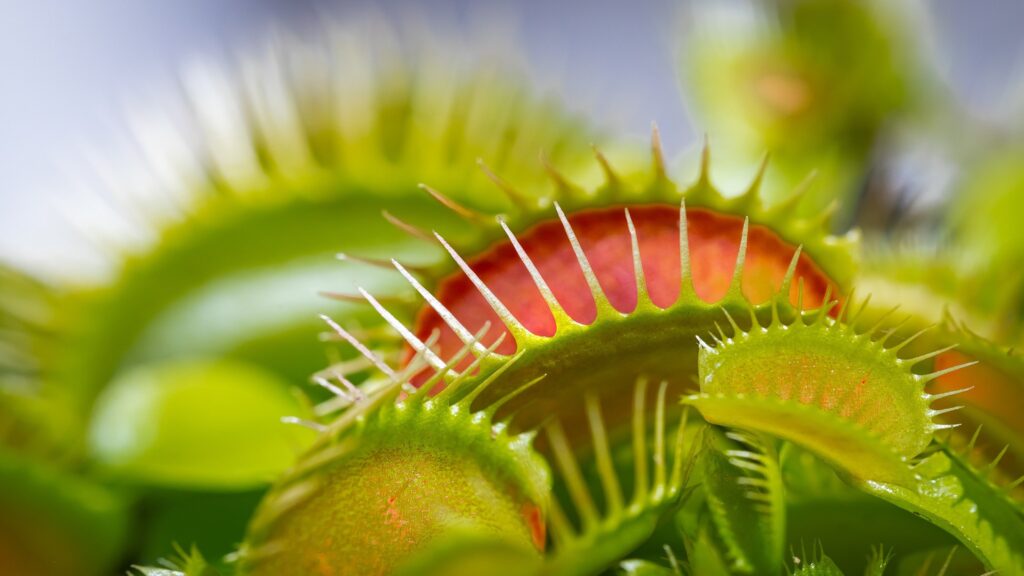
Not every object is food to a Venus flytrap. Like the carnivorous plant, a new material developed at Northwestern University permanently traps only its desired prey, the radioactive ion cesium, and not other harmless ions like sodium.
The synthetic material, made from layers of a gallium, sulfur and antimony compound, is very selective. The Northwestern researchers found it to be extremely successful in removing cesium — found in nuclear waste but very difficult to clean up — from a sodium-heavy solution. (The solution had concentrations similar to those in real liquid nuclear waste.)
It is, in fact, cesium itself that triggers a structural change in the material, causing it to snap shut its pores, or windows, and trap the cesium ions within. The material sequesters 100 percent of the cesium ions from the solution while at the same time ignoring all the sodium ions.
The results are published online by the journal Nature Chemistry.
“Ideally we want to concentrate the radioactive material so it can be dealt with properly and the nonradioactive water thrown away,” said Mercouri G. Kanatzidis, Charles E. and Emma H. Morrison Professor of Chemistry in the Weinberg College of Arts and Sciences and the paper’s senior author. “A new class of materials that takes advantage of the flytrap mechanism could lead to a much-needed breakthrough in nuclear waste remediation.”
Capturing only cesium from vast amounts of liquid nuclear waste is like looking for a needle in a haystack, Kanatzidis said. The waste has a much higher concentration of sodium compared to cesium, with ratios as great as 1,000-to-1. This difficult-to-achieve selectivity is why currently there is no good solution for cesium removal.
The Northwestern material is porous with its atoms arranged in an open and layered framework structure with many windows to promote rapid ion exchange. Initially, organic cations reside in the material; when the material comes into contact with the liquid, the cations leave the material by going through the windows, and the cesium ions come in. In the end, the material contains only cesium ions and no organic cations. (The presence of organic cations in the liquid is not an issue as the cations are not radioactive.)
The snap-shut Venus flytrap mechanism occurs because ‘soft’ materials like to interact with each other. A cesium ion is big and soft, and the metal-sulfide material is soft, too. The cesium ions are attracted to the material, specifically the sulfur atoms, and together form a weak bond. This interaction causes the material to change shape, close its windows and trap the cesium — like a juicy insect in a flytrap. Sodium, which is clothed in water molecules, can’t trigger the response.
Kanatzidis and Nan Ding, then a doctoral student in Kanatzidis’ research group and an author of the paper, did not set out to discover the flytrap mechanism. Instead, they were investigating different structures of the material, wondering if they could act as ion exchangers.
“Seeing the windows close was completely unexpected,” Kanatzidis said. “We expected ion exchange — we didn’t expect the material to respond dynamically. This gives us a new mechanism to focus on.”
 Scientists trace the path of radioactive cesium in the ecosystem of Fukushima
Scientists trace the path of radioactive cesium in the ecosystem of Fukushima Deadly Deceit: Low-level Radiation, High-level Cover-up
Deadly Deceit: Low-level Radiation, High-level Cover-up Woolsey Fire & Santa Susana Field Lab Documentary: ‘In the Dark of the Valley’
Woolsey Fire & Santa Susana Field Lab Documentary: ‘In the Dark of the Valley’ Screening truffles for radioactivity 30 years from Chernobyl
Screening truffles for radioactivity 30 years from Chernobyl